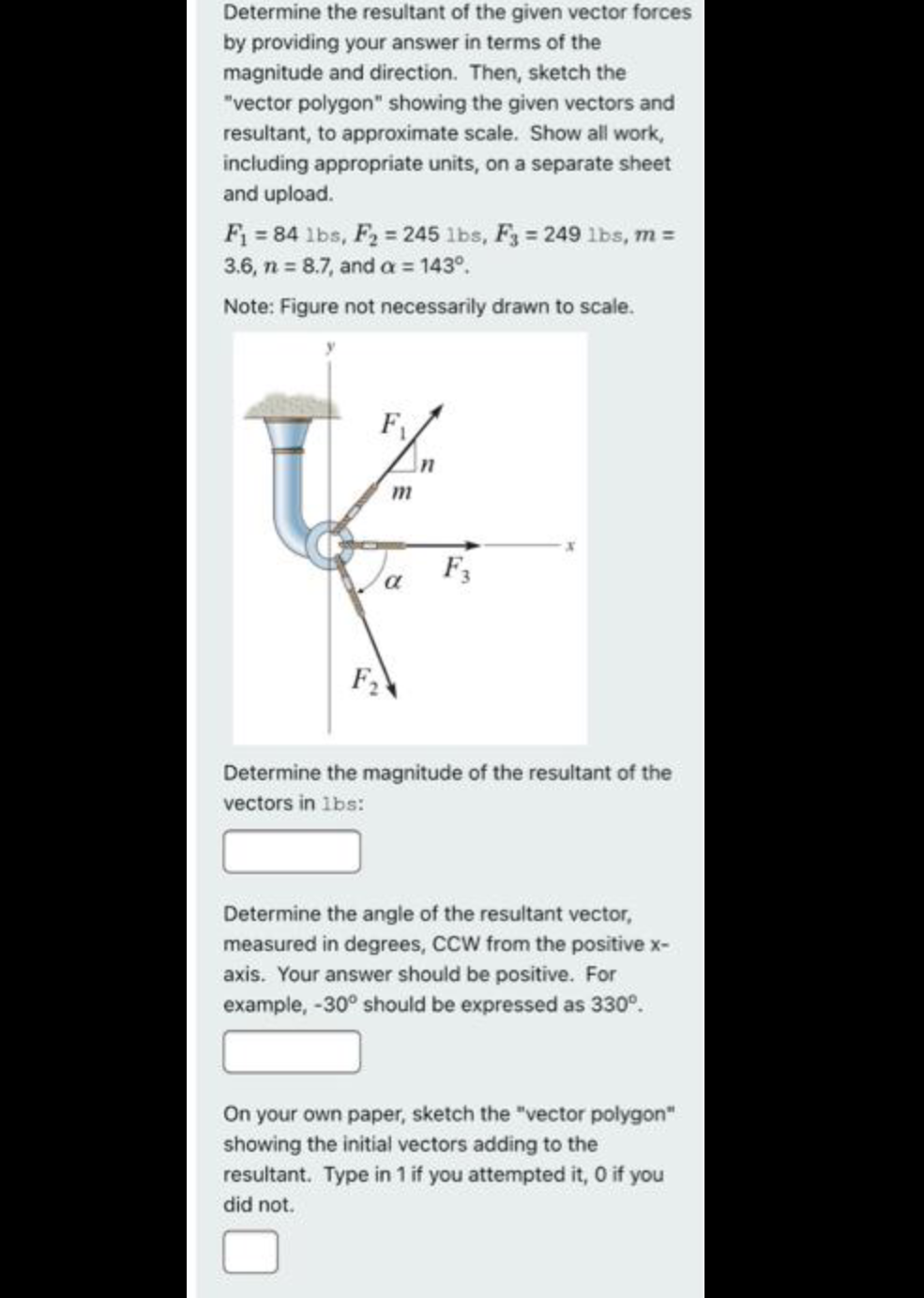Determine the resultant of the given vector forces by providing your answer in terms of the magnitude and direction. Then, sketch the "vector polygon" showing the given vectors and resultant, to approximate scale. Show all work, including appropriate units, on a separate sheet and upload. F = 84 lbs, F2 = 245 lbs, F3 = 249 lbs, m = 3.6, n = 8.7, and a 143°. Note: Figure not necessarily drawn to scale.
Determine the resultant of the given vector forces by providing your answer in terms of the magnitude and direction. Then, sketch the "vector polygon" showing the given vectors and resultant, to approximate scale. Show all work, including appropriate units, on a separate sheet and upload. F = 84 lbs, F2 = 245 lbs, F3 = 249 lbs, m = 3.6, n = 8.7, and a 143°. Note: Figure not necessarily drawn to scale.
International Edition---engineering Mechanics: Statics, 4th Edition
4th Edition
ISBN:9781305501607
Author:Andrew Pytel And Jaan Kiusalaas
Publisher:Andrew Pytel And Jaan Kiusalaas
Chapter8: Centroids And Distributed Loads
Section: Chapter Questions
Problem 8.104P
Related questions
Question
Practice Pack

Transcribed Image Text:Determine the resultant of the given vector forces
by providing your answer in terms of the
magnitude and direction. Then, sketch the
"vector polygon" showing the given vectors and
resultant, to approximate scale. Show all work,
including appropriate units, on a separate sheet
and upload.
F = 84 lbs, F2 = 245 lbs, F3 = 249 lbs, m =
3.6, n = 8.7, and a = 143°.
Note: Figure not necessarily drawn to scale.
F1
F,
Determine the magnitude of the resultant of the
vectors in 1bs:
Determine the angle of the resultant vector,
measured in degrees, CCCW from the positive x-
axis. Your answer should be positive. For
example, -30° should be expressed as 330°.
On your own paper, sketch the "vector polygon"
showing the initial vectors adding to the
resultant. Type in 1 if you attempted it, 0 if you
did not.
Expert Solution
This question has been solved!
Explore an expertly crafted, step-by-step solution for a thorough understanding of key concepts.
Includes step-by-step video
Learn your way
Includes step-by-step video
Step by step
Solved in 3 steps with 2 images

Knowledge Booster
Learn more about
Need a deep-dive on the concept behind this application? Look no further. Learn more about this topic, mechanical-engineering and related others by exploring similar questions and additional content below.Recommended textbooks for you

International Edition---engineering Mechanics: St…
Mechanical Engineering
ISBN:
9781305501607
Author:
Andrew Pytel And Jaan Kiusalaas
Publisher:
CENGAGE L

International Edition---engineering Mechanics: St…
Mechanical Engineering
ISBN:
9781305501607
Author:
Andrew Pytel And Jaan Kiusalaas
Publisher:
CENGAGE L